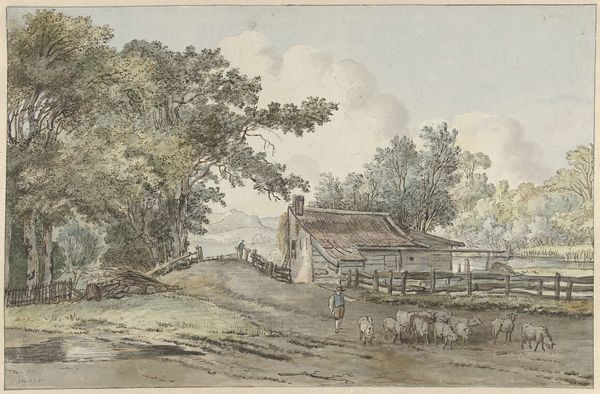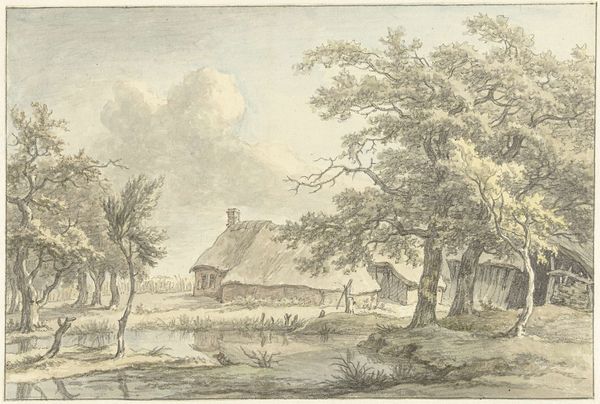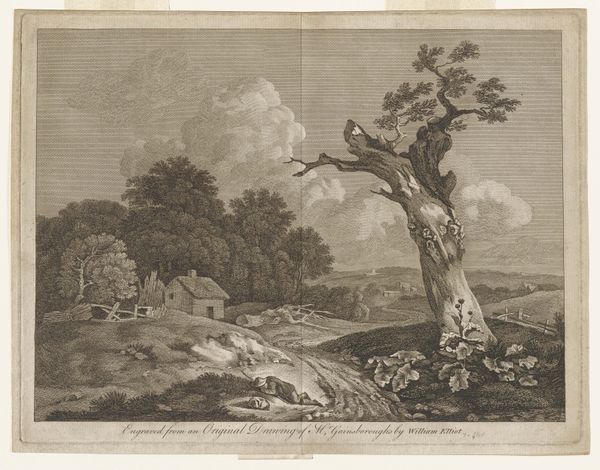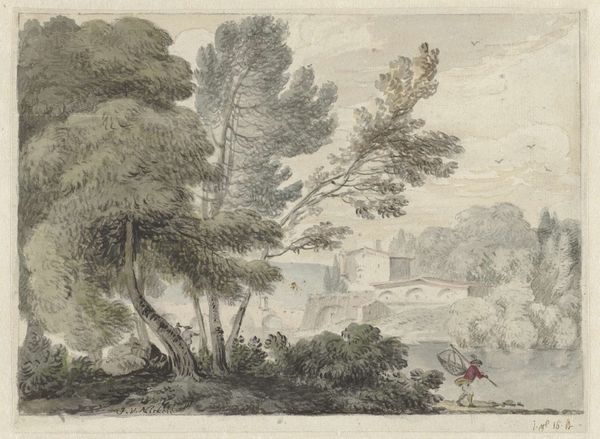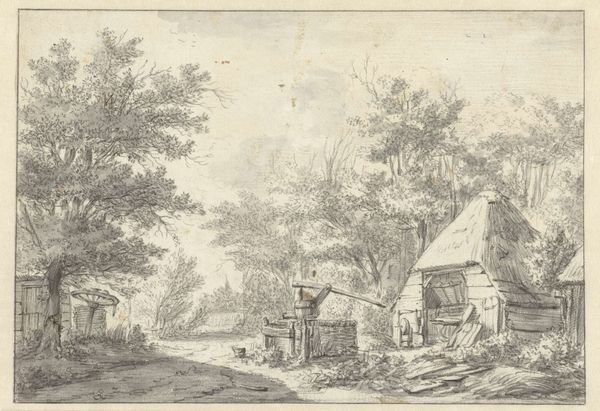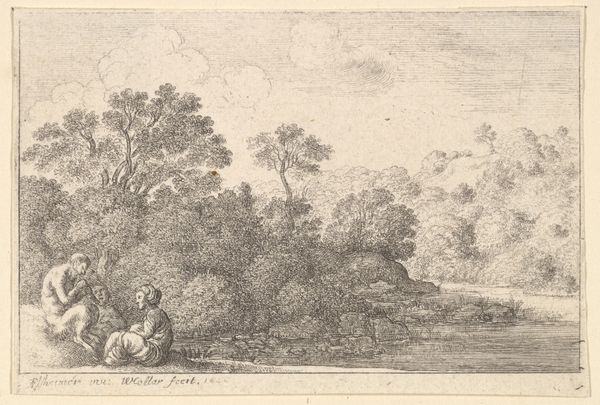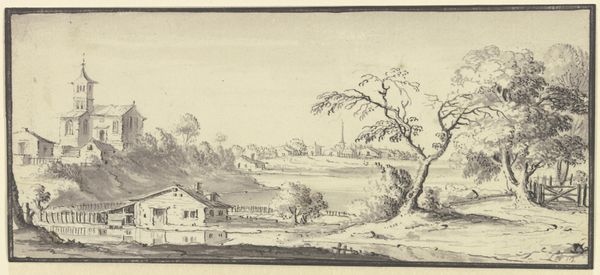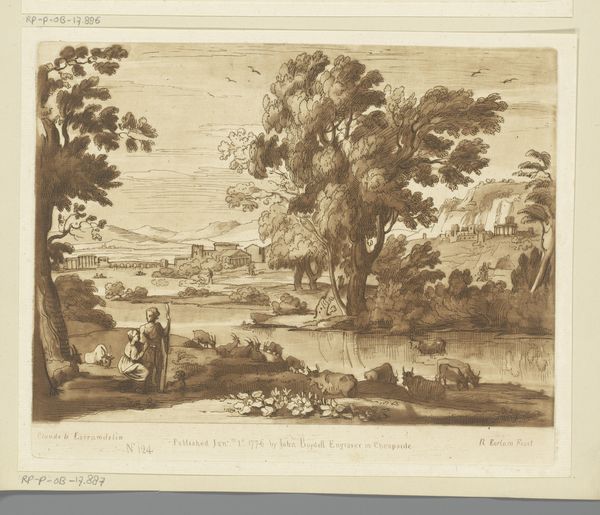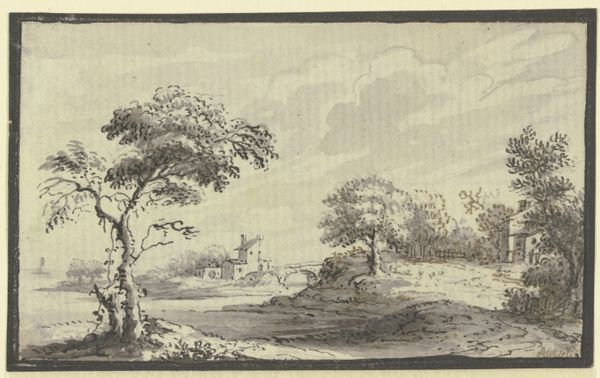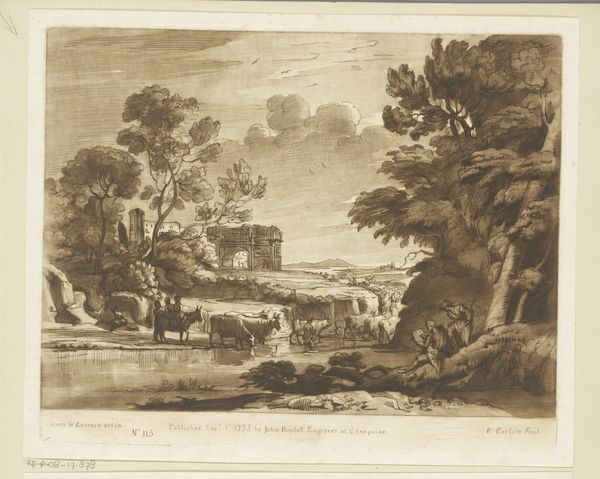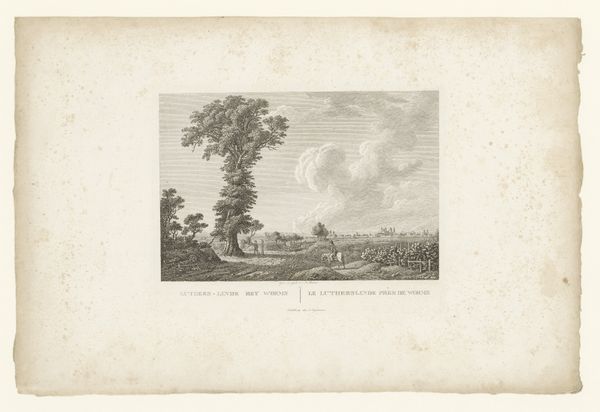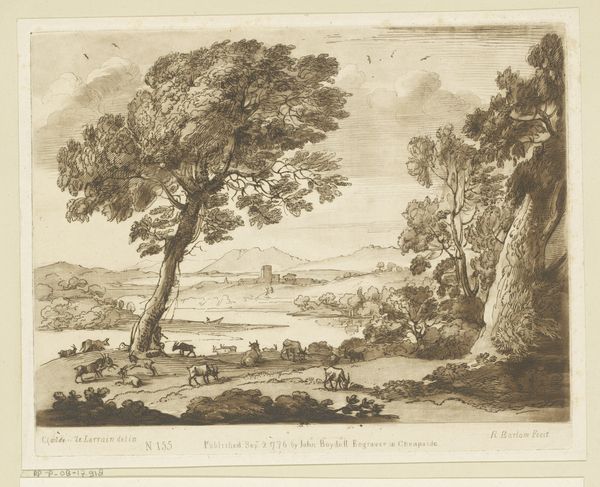
painting, paper, ink
#
dutch-golden-age
#
painting
#
landscape
#
paper
#
ink
#
genre-painting
Dimensions: height 147 mm, width 198 mm
Copyright: Rijks Museum: Open Domain
Curator: This work is "Landscape with a Wooden Bridge and Trees along a Canal" created around 1704 by Wigerus Vitringa. It's a Dutch Golden Age piece rendered in ink on paper. Editor: The tones feel almost ghostly, muted grays and browns. The way the ink bleeds slightly on the paper gives it this ethereal quality. It feels very immediate and present, despite the obvious age. Curator: These quiet landscape scenes became very popular with the rising merchant class in the Netherlands. Owning depictions of the countryside allowed people to project wealth and an elevated position in the world, especially at a time of increasing urbanization. Vitringa catered to this market. Editor: I'm intrigued by the material handling. It's just ink on paper, not grand oil on canvas. It suggests an accessibility to art making – perhaps even amateur creation—a sort of democratic sensibility inherent in its humble media. Do we know if he prepared his inks or purchased them? Curator: He would have definitely been grinding pigments and making his own inks. Artists at the time, were quite involved with creating their tools, the division of labor was completely different than now, as this practice conferred an extra layer of creative license over the image being constructed. Vitringa was a well-established artist from a prominent family; this image probably reinforced a vision of a society undergoing transformation while keeping at bay its potential discontents. Editor: Look closely; you can see the individual strokes in the trees, creating textures and capturing light and shadow in a highly material manner. The bridge, and particularly the small boat are given an equal measure of focus as the verdant areas. It suggests an attempt at revealing aspects of material production, distribution, or even, class identity. Curator: Perhaps. The painting's success, though, was really predicated on representing the idea of leisurely escape, depicting an idealized vision of rural life for those increasingly confined in cities. And, after all, what we choose to showcase—be it material processes or scenes of escape— is itself always imbued with cultural and socio-political significance. Editor: I find myself lingering over the physicality of its making and its simplicity; almost as a working plan, the painting’s unassuming materials encourage contemplation of how art comes into being through available means. Curator: And I consider how its existence highlights how societal aspirations and anxieties play a role in what makes certain works meaningful across generations.
Comments
No comments
Be the first to comment and join the conversation on the ultimate creative platform.
